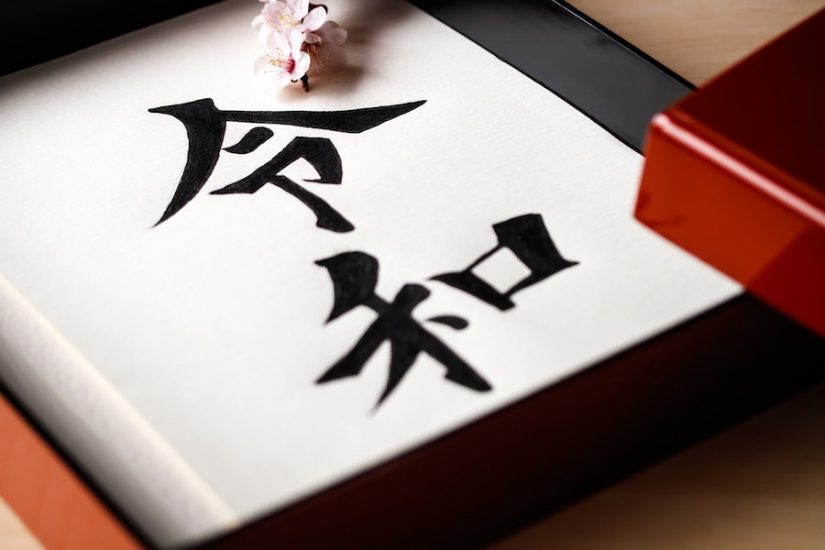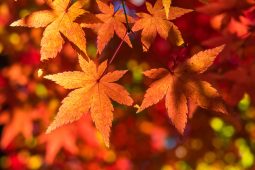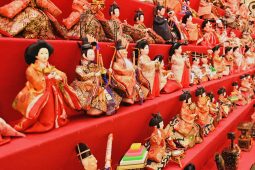On May 1 st 2019 Japan entered a new official era to mark the new emperor’s ascension to the Chrysanthemum Throne. The name chosen for this era, Reiwa, uses two Chinese characters 令和 which were taken from an ancient Japanese poetry collection called the Man’yōshū. Oddly these characters were not taken from a poem, but from a preface to a series of poems on plum blossom. The preface describes the circumstances of their composition:
于時、初春令月、氣淑風和、梅披鏡前之粉、蘭薫珮後之香。
This can be roughly translated as, “The time was the second month in early spring, with fresh air and soft breezes, when plum blossoms bloom like beauty before a mirror, and orchids are as fragrant as a scented sachet.
Sharp eyes will note that the two characters for Reiwa have been taken from separate parts of the sentence. The first character 令 (rei) is taken from 令月 which refers to the 2nd month of the lunar calendar, but can also be translated as “auspicious month” or “fine month”. The second character 和 is taken from 風和 which describes “soft breezes” or “gentle winds”. Much speculation has gone into what the two characters mean when put together, but it can be noted that the original context describes a rather hopeful scene of pleasant spring weather. This does seem an appropriate herald for the dawn of a new era.
One happy outcome of the Reiwa announcement was that immediately after, bookshops around Japan reported a sudden upsurge of interest in the Man’yōshū poetry collection, and in books about it. That the Man’yōshū should suddenly become a bestseller is extraordinary when you consider its antiquity. It is in fact the oldest of Japan’s classical poetry anthologies, and was compiled sometime after the year 759 with some poems dating back to the late 5th century. Despite its age, many scholars consider it to be the finest collection of classical Japanese poetry, and the late Donald Keene described it as “the supreme monument of Japanese lyricism”. One aspect that explains its appeal is its variety. Unlike later anthologies which only include the voices of the Japanese aristocracy, the Man’yōshū includes poems by the common people too. There are poems by emperors alongside rustic folksongs, different dialects are represented, and one of the most famous poets in the collection, Yamanoue Okura, was quite possibly a refugee from the Korean kingdom of Paekche. This inclusivity is matched by the poetry itself and by its subject matter. While later collections consist almost entirely of short poems called tanka, there are a greater variety of poetic forms in the Man’yōshū, with poems of varying lengths. In the topics covered too there is more diversity, with poems on poverty and grief, narrative poems and elegies that would not be seen in later anthologies.
The Man’yōshū is not without its challenges, however. The title, for example, is a subject of much contention. Literally Man’yōshū means “Ten Thousand Leaves Collection”. However, “ten thousand” in this context is not so much a literal figure, but rather expresses a large number beyond count. What the leaves signify is not widely agreed upon, with words, poems, or the sheets of paper that the collection was written on all being proffered as likely contenders. It is a pretty title though, and one that reflects the natural imagery that recurs throughout the collection. There are in fact over 150 different plants mentioned in the Man’yōshū, and in tribute to this aspect of the poetry, Manyō Botanical Gardens, which attempt to grow every species included in the collection, have been established throughout Japan.
More daunting than the title though, is the size of the collection. There are 4,516 poems in the Man’yōshū which are spread over 20 volumes. Although complete English translations have been made in the past, these are rather hard to get hold of and they tend to be quite pricey too. It would seem best to begin our exploration of this treasure of world literature by dipping into a published selection. I have on my own shelves a copy of Love Songs from the Man’yōshū, which I believe will serve our purpose well. It comes with a scholarly, but lucid commentary by the late poet, Ōoka Makoto, some very splendid translations by Ian Hideo Levy, and even some illustrations which come in the form of stunning paper-cut images by the late artist, Miyata Masayuki. Here are three poems I have chosen from this book, to give you a taste of the poetry’s rich expression and emotional power. I am giving my own translations here, but I would encourage the reader to seek out those of Mr. Levy as they really are quite marvelous.
見渡せば明石の浦に燭す火のほにぞ出でぬる妹に恋ふらく
I look across
to the coast of Akashi
where fires are lit
and flames leap up
like my own love for my girl
— by Prince Kadobe
The commentary tells us that the fires were lit by fishermen. Noticing their lights across the sea, the poet simultaneously realizes his own deep feelings. The scene of distant lights somehow reflects the longing in his heart.
彦星の妻迎へ舟漕ぎ出らし天の川原に霧の立てるは
The cowherd it seems
has begun to row his boat
to meet his princess —
on Heaven’s River banks
mist begins to rise
— by Yamanoue Okura
There is a legend that two stars in the sky are thwarted lovers: Hikoboshi a cowherd, and Orihime a princess. They are only able to meet one night of the year, on the 7th day of the 7th lunar month. On this day Hikoboshi rows his boat to meet Orihime across the Milky Way, but if the weather is cloudy and the way cannot be seen, then they have to wait another year. This poem, with the rising threat of mist, seems to be urging Hikoboshi to row a little faster!
春の苑くれなゐにほふ桃の花下照る道に出で立つをとめ
a garden in spring —
gleaming crimson
peach flowers
shine down to the path
where a girl has tarried
— by Ōtomo Yakamochi
And we end with a poem by the compiler of the Man’yōshū. We could speculate as to why the girl suddenly appears on the path, or what it is that has made her pause on her way. Perhaps she has stopped to enjoy the blossom? It is a pretty garden picture, and one we can happily tarry over too.








